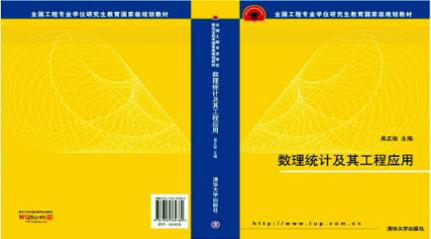
当前课程知识点:跨文化交际 > Module 10: Developing Intercultural Competence as a Global Citizen > 课外延伸-Developing Intercultural Competence as a Global Citizen > 讨论-Understanding Intercultural Communication
1. Interview a friend about their cultural background and identify at least one aspect you share as well as one aspect that you do not share. Share and compare your results with classmates.
2. In what ways the dominant culture influences and controls the values, attitudes and behavior of co-cultures?
3.case study: Read the following case and analyze why Sam didn’t perform his work successfully together with his Saudi Arabian laborers.
Sam Lucas was a construction supervisor for an international engineering firm. He had the reputation of being tough but fair-minded. He was a very forceful individual who always spoke his mind. He never hesitated to criticize any worker whom he found was performing poorly. During his six years with the company, Sam have never worked outside of the United States. Three months ago, he was chosen to supervise construction on a new hotel project in Jidda, Saudi Arabia, primarily because of his outstanding work record. On this project, Sam supervised the work of about a dozen Americans and nearly 170 ever been laborers. It was not long before Sam realized that the Saudi Arabian laborers, to his way of thinking, were nowhere as reliable as the workers he had supervised in the United States. He was becoming increasingly annoyed at the seeming lack of competence of the local workforce. Following the leadership style that helped him back in the US., he would rebuke any worker who is not doing his job properly. And he would make certain that he did it publicly so that it would serve as a lesson to all the other workers. He was convinced that he was doing the right thing and was being fair, for after all, he rebuked both Americans in Saudi Arabia alike. He was troubled, however, by the fact that the problems seem to be growing worse and more numerous.
(Source: Wang Weibo, Che Lijuan, Intercultural Communication in Business, Beijing: Foreign Language Teaching and Research Press, 2019,pp.22)
-1.1 Culture & Its Elements
-1.2 Characteristics of Culture
-1.3 Metaphors of Culture
-1.4 Basics of Communication
-1.5 Intercultural Communication
-课后习题-Understanding Intercultural Communication
-讨论-Understanding Intercultural Communication
-课外延伸-Understanding Intercultural Communication
-2.1 The Kluckhohns and Strodtbeck’s Value Orientations
--The Kluckhohns and Strodtbeck’s Value Orientations
-2.2 Hofstede’s Value Dimensions
-2.3 Hall’s High-context and Low-context Orientations
--Hall’s High-context and Low-context Orientations
-2.4 Face and Facework
-2.5 Dominant Chinese Cultural Patterns
--Dominant Chinese Cultural Patterns
-2.6 Dominant United States Cultural Patterns
--Dominant United States Cultural Patterns
-课后习题-Values and Value Orientations Across Cultures
-讨论-Values and Value Orientations Across Cultures
-课外延伸-Values and Value Orientations Across Cultures
-3.1 The Relationship between Language and Culture
--The Relationship between Language and Culture
-3.2 Cultural differences in Words and their Meaning
--Cultural differences in Words and their Meaning
-3.3 Cultural Differences in Daily Conversations
--Cultural Differences in Daily Conversations
-3.4 Communication Styles
-课后习题-Language and Culture
-4.1 Basics of Nonverbal Communication
--Basics of Nonverbal Communication
-4.2 Body Language
-4.3 Time
--Time
-4.4 Space and Touch
-Nonverbal Communication Across Cultures
-讨论-Nonverbal Communication Across Cultures
-课外延伸-Nonverbal Communication Across Cultures
-5.1 Cultural Influences on Education
--Cultural Influences on Education
-5.2 Traditional Chinese Medicine Vs. Western Medicine
--Traditional Chinese Medicine Vs. Western Medicine
-5.3 Major Tea Cultures in the World
--Major Tea Cultures in the World
-5.4 Cultural Influences on Politics
--Cultural Influences on Politics
-课后习题-Cultural Influences on Various Contexts
-讨论-Cultural Influences on Various Contexts
-课外延伸-Cultural Influences on Various Contexts
-6.1 Sex and Gender
-6.2 Gender Roles across Cultures
--Gender Roles across Cultures
-6.3 Sexist Language
-6.4 Cross-gender Communication
-课后习题-Gender and Communication Across Cultures
-讨论-Gender and Communication Across Cultures
-课外延伸-Gender and Communication Across Cultures
-7.1 Business Negotiation across Cultures
--Business Negotiation across Cultures
-7.2 Business Protocols across Cultures
--Business Protocols across Cultures
-7.3 Conflict Management across Cultures
--Conflict Management across Cultures
-7.4 Cultural Impact on Global Marketing
--Cultural Impact on Global Marketing
-7.5 Business Leadership across Cultures
--Business Leadership across Cultures
-课后习题-Intercultural Communication in Business Setting
-讨论-Intercultural Communication in Business Setting
-课外延伸-Intercultural Communication in Business Setting
-8.1 Introduction to the Belt and Road Initiative
--Introduction to the Belt and Road Initiative
-8.2 The Cultural Foundations of the Belt and Road Initiative
--The Cultural Foundations of the Belt and Road Initiative
-8.3 Globalization and the Belt and Road Initiative
--Globalization and the Belt and Road Initiative
-8.4 Language Communication in the Belt and Road Construction
--Language Communication in the Belt and Road Construction
-课后习题-Communication Across “Belt and Road “Countries
-讨论-Communication Across “Belt and Road “Countries
-课外延伸-Communication Across “Belt and Road “Countries
-9.1 Global Challenges Facing Humankind
--Global Challenges Facing Humankind
-9.2 Stereotyping, Prejudice and Ethnocentrism
--Stereotyping, Prejudice and Ethnocentrism
-9.3 Intercultural Communication Toward a Community of Shared Future
--Intercultural Communication Toward a Community of Shared Future
-课后习题-A cross-Cultural Dialogue Toward a Community of Shared Future for Mankind
-讨论-A cross-Cultural Dialogue Toward a Community of Shared Future for Mankind
-课外延伸-A cross-Cultural Dialogue Toward a Community of Shared Future for Mankind
-10.1 Cultural Shock
-10.2 Acculturation
-10.3 The Concept of Intercultural Communication Competence
--The Concept of Intercultural Communication Competence
-10.4 The Components of Intercultural Communication Competence
--The Components of Intercultural Communication Competence
-10.5 Improving Intercultural Communication Competence
--Improving Intercultural Communication Competence
-课后习题-Developing Intercultural Competence as a Global Citizen
-讨论-Developing Intercultural Competence as a Global Citizen
-课外延伸-Developing Intercultural Competence as a Global Citizen


